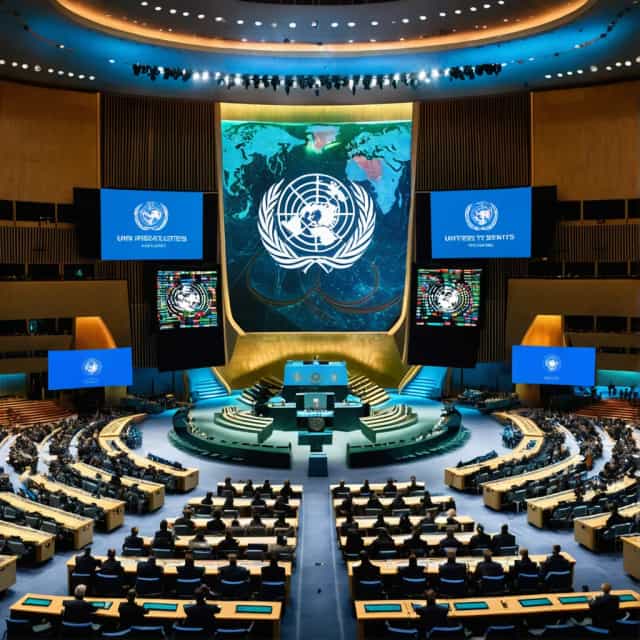
출처: Block Media
Trump’s H-1B Visa Reforms: A Closer Look at the Labor Market Debate
The election of Donald Trump in 2016 signaled a dramatic shift in U.S. policy, driven by strong support from two factions: the "Make America Great Again" (MAGA) base and influential tech leaders like Elon Musk. While Musk initially supported Trump, their relationship deteriorated as Trump cracked down on Big Tech, culminating in sweeping restrictions on the H-1B visa program. This program, a cornerstone for importing highly skilled foreign labor, became a flashpoint in debates around U.S. labor market reform.
The key question remains: how will America's tech titans—many of whom initially aligned with Trump—react to policies they argue could hinder innovation while reshaping labor dynamics in the technology and broader business sectors?
The H-1B Visa Program and Its Exploitation
The Trump administration's pivot on the H-1B visa program was not entirely surprising. Long-standing criticisms of the program’s misuse had been building momentum. Critics argue the visa system allowed companies to replace highly skilled American professionals with lower-cost foreign labor. Trump’s reforms introduced higher application fees and stringent regulations to compel corporations to hire U.S. talent or pay a substantial premium for hiring foreign workers.
"The H-1B visa program has been abused for years," Trump argued, pointing to systematic exploitation designed to undercut wages and replace American workers with less expensive foreign alternatives.
Unpacking H-1B Visa Misuse
1. Wage Suppression and Limited Mobility
Investigative reports, including from Bloomberg, have shown how certain technology, finance, and telecom firms leveraged the H-1B program to suppress wages by hiring foreign IT professionals at below-market salary levels. The restrictive nature of the visa often traps holders with their employers, as switching jobs can jeopardize their immigration status. Critics say this contractual leverage fosters worker exploitation and erosion of fair wage standards.
2. Manipulation by Staffing Agencies
Staffing firms often clog the H-1B application pool by submitting an overwhelming number of petitions to monopolize visa access. Once these firms secure visas, they lease foreign workers to large corporations on a contingent basis. For example, in 2023, U.S. agencies received a staggering 446,000 H-1B applications for just 85,000 private-sector slots. This volume leaves smaller businesses and independent applicants with legitimate needs effectively sidelined.
3. Disproportionate Allocation to Certain Countries
Over 70% of H-1B visas are awarded to applicants from a single country—India—a statistic that underscores claims of systemic bias. Critics allege this pattern is more about outsourcing companies taking advantage of the system than genuinely sourcing the world’s top talent. This concentration raises concerns about oligopolistic control and undermines the program’s original intent.
4. Neglect of U.S. STEM Graduates
Supporters of the H-1B system highlight its importance in addressing talent shortages, especially in STEM (Science, Technology, Engineering, and Mathematics) fields. However, paradoxically, U.S. STEM graduates face elevated unemployment rates in disciplines like physics, chemistry, and computer science compared to non-STEM fields like art history. This anomaly raises questions: why are domestic STEM professionals being overlooked while firms heavily rely on foreign talent under the H-1B program?
Goals of Reform and Challenges Ahead
Trump’s H-1B overhaul seeks to realign the program’s purpose—prioritizing fields where verified skill shortages exist while promoting domestic employment. Key reforms include raising the minimum wage requirements for H-1B holders and instituting a one-time $10,000 visa application fee. These measures aim to deter abuse and level the cost dynamic between hiring foreign workers and domestic talent.
Commerce Secretary Howard Lutnick summarized this approach succinctly: “If a company truly values a foreign worker, they’ll pay the $10,000 fee and offer competitive wages. Otherwise, it’s time to invest in hiring American.” The White House later clarified that the application fee would serve as a temporary deterrent, emphasizing the long-term goal of fair competition.
Corporate Impacts and Broader Implications
The reforms pose significant challenges, particularly to businesses within the technology sector. Many firms are concerned about slowed innovation, rising labor costs, and difficulties securing specialized skills domestically. Additionally, some companies may consider relocating operations offshore as a response to increased hiring barriers in the U.S.
Reform supporters counter these concerns by advocating for fair competition. They argue that reforms merely require firms to prioritize skilled American workers when possible, rather than defaulting to lower-cost foreign labor. “The goal isn’t to stifle growth but to ensure equity for the American workforce,” proponents claim.
As the reforms take root, their long-term effects are under scrutiny. Labor economists and industry stakeholders are closely monitoring how corporations respond to these shifts in workforce dynamics.
Innovation vs. Fairness: A National Debate
Trump’s reforms of the H-1B visa system have ignited a contentious debate on the intersection of labor market equity and technological progress in America. With tech titans and policymakers at odds, the future of U.S. innovation and economic productivity hangs in the balance. While the ultimate outcome remains uncertain, the implications for talent acquisition, corporate strategy, and national economic priorities are poised to ripple far beyond Washington, reshaping the U.S. labor market for years to come.










